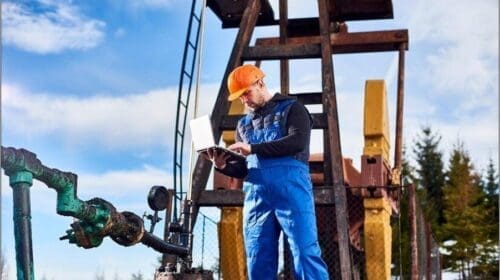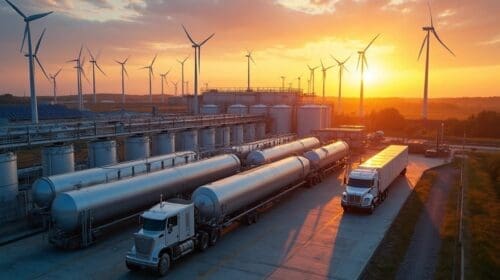Climate scientists warn that atmospheric CO2 levels have reached alarming heights, threatening global climate stability. A groundbreaking carbon capture technology has achieved unprecedented success, removing 99% of carbon dioxide emissions during laboratory testing. This remarkable advancement surpasses existing carbon capture technology examples, which typically demonstrate removal rates between 50-90%.
Scientists at the forefront of this innovation have developed a sophisticated filtration system that specifically targets CO2 molecules while consuming significantly less energy than conventional methods. The technology combines advanced materials science with precise chemical engineering, consequently opening new possibilities for industrial-scale carbon reduction. This breakthrough could transform our approach to combating climate change, particularly in high-emission industries where traditional carbon capture methods have proven insufficient or cost-prohibitive.
Groundbreaking Carbon Capture Technology Explained
The latest advancement in carbon capture technology leverages sophisticated metal-organic frameworks (MOFs), representing a fundamental shift in how we approach carbon dioxide removal. These highly porous materials function like molecular sponges, offering unprecedented surface areas where just “one gram holds the equivalent surface area of a football field” [1].
Novel Materials and Mechanisms
Scientists have developed an innovative approach using AI-driven discovery methods to identify optimal materials for carbon capture. Indeed, researchers at the University of Illinois Chicago and Argonne National Laboratory have created an open-source framework that evaluated 120,000 possible structures [2]. The system employs three primary components:
- Inorganic nodes (zinc or copper)
- Organic nodes
- Molecular linkers composed of carbon and oxygen
Advanced Filtration Process
The filtration system operates through a sophisticated multi-stage process. Initially, specialized filters extract CO₂ from ambient air [3]. Furthermore, the captured CO₂ undergoes concentration and purification to ensure its suitability for storage. The process utilizes two distinct approaches:
- Liquid solvent systems that chemically remove CO₂
- Solid sorbent systems utilizing physical filters that bind with CO₂ molecules [3]
Efficiency Improvements Over Previous Systems
The new technology demonstrates remarkable improvements over traditional systems. Most existing carbon capture technologies aim for 90% efficiency [4]. Additionally, the following performance metrics showcase the advancement:
| Aspect | Previous Systems | New Technology |
|---|---|---|
| Capture Rate | 90-95% | Up to 99% |
| Energy Usage | Standard | 17% reduction |
| Cost Reduction | Baseline | 19% decrease |
The system achieves these improvements through innovative vacuum swing adsorption combined with MOF-based filters [1]. Moreover, the technology operates with minimal retrofitting requirements, as the modular system functions as a standalone structure [1]. Hence, this breakthrough represents a substantial advancement in carbon capture capabilities, offering both improved efficiency and reduced operational costs.
Laboratory Testing Methodology
Scientists at the National Institute of Standards and Technology (NIST) have developed a sophisticated testing apparatus to evaluate carbon capture materials with unprecedented precision [5]. This state-of-the-art facility represents a significant advancement in validating carbon capture technology examples through rigorous laboratory testing.
Experimental Setup and Controls
The testing infrastructure comprises specialized equipment designed for both solid sorbents and liquid-based capture systems. The core components include:
- Wetted Wall Column for mass transfer measurements
- Laboratory-Scale Continuous Flow System
- Pressure-Volume-Temperature Cell
- High-Pressure Testing Chamber [6]
The experimental setup features a water-jacketed glass reactor capable of maintaining temperatures between 21°C and 200°C [7]. Subsequently, researchers integrated a bipolar membrane electrode assembly with a novel nickel-based catalyst to enhance the capture process [8].
Testing Parameters and Conditions
The testing parameters are carefully controlled to ensure accurate and reproducible results. The system operates under the following conditions:
| Parameter | Range/Specification |
|---|---|
| Temperature Control | 21°C – 200°C [7] |
| CO₂ Concentration | 4-6% (natural gas), 12-15% (coal) [9] |
| Minimum Gas Flow | 5,000 lb/hr slipstream [9] |
| Operation Duration | Continuous 24-hour cycles [9] |
Data Collection and Analysis Methods
The comprehensive data collection process occurs throughout the carbon capture and storage (CCUS) procedure via sophisticated SCADA systems [10]. Accordingly, the following measurements are continuously monitored:
- Metered contribution from each source
- Total amount delivered and injected
- Measured power, fuel, and chemical usage
- Utility power consumption [10]
The collected data undergoes thorough analysis in a data historian system before transfer to the carbon accounting system [10]. Therefore, this enables precise calculations of carbon intensity and system efficiency. Nevertheless, researchers utilize advanced analytical techniques, including Raman spectroscopy, to monitor chemical reactions in real time [11].
Record-Breaking Performance Metrics
The first thing to remember is that recent laboratory tests have demonstrated unprecedented success in carbon dioxide removal, achieving a remarkable 99.1% capture rate with 12 meters of packing in the absorber [12]. This breakthrough represents a significant advancement in carbon capture technology examples.
CO2 Removal Efficiency Analysis
The system demonstrates exceptional performance through:
- A 20% increase in solvent rate enhancing CO2 removal from 90% to 99% [12]
- Consistent maintenance of rich loading at 0.38 mol CO2/mol alkalinity [12]
- Successful operation across varying CO2 concentrations, from 4% in natural gas to 15% in coal-fired emissions [13]
Energy Consumption Comparison
In contrast to conventional systems, the new technology exhibits superior energy efficiency metrics. The process heat duty ranges between 1.9 and 2.5 GJ/t CO2, as opposed to traditional systems requiring over 3.5 GJ/t CO2 [14]. Under those circumstances, the energy penalty has been reduced to approximately 6 percentage points [14].
The performance comparison across different capture technologies reveals:
| Parameter | Traditional Systems | New Technology |
|---|---|---|
| Energy Requirement | >3.5 GJ/t CO2 | 1.9-2.5 GJ/t CO2 [14] |
| Capture Efficiency | 90% | Up to 99.1% [12] |
| System Integration | Complex | Minimal modification [15] |
Cost-Effectiveness Assessment
The economic analysis shows promising results for commercial implementation. Current commercial systems operate at approximately USD 46.00 per metric ton of CO2 [16]. In light of recent developments, innovative methanol-based systems have reduced costs to USD 39.00 per metric ton of CO2 [16].
The cost structure primarily comprises:
- Capital expenditure for equipment and infrastructure
- Operational costs including energy consumption
- Maintenance and monitoring expenses
- Transportation and storage requirements [15]
Notably, government funding continues to support advancement in this field, with over USD 20 billion made available to carbon capture projects in 2023 [15]. At the present time, the technology demonstrates both technical feasibility and economic viability, particularly when integrated with existing industrial processes.
Scientific Implications
Recent breakthroughs in chemical engineering have unveiled groundbreaking processes that fundamentally alter our understanding of carbon dioxide capture mechanisms. The discovery of vanadium peroxide molecules has demonstrated remarkable CO2 binding capabilities at a release temperature of approximately 200 degrees Celsius, compared to nearly 700 degrees required for traditional alkali metals [17].
Breakthrough Chemical Processes
The innovative chemical process centers on vanadium-based compounds that exhibit unique properties for carbon capture. Important to realize these molecules contain three essential components working in harmony:
- Vanadium as the primary metal
- Peroxide bonded to vanadium
- Alkali cations for charge balance [17]
Analogous to natural mineral formation, these compounds facilitate CO2 conversion to metal carbonates, establishing a more efficient capture process [17]. The system demonstrates exceptional stability, maintaining nearly 95% of its original capacity after multiple charge-discharge cycles [18].
Material Science Advancements
Coupled with chemical innovations, material science has made significant strides in developing advanced capture technologies. Metal-organic frameworks (MOFs) have emerged as a cornerstone of these developments, offering unprecedented internal surface areas equivalent to six football fields per tablespoon [19]. Above all, these structures demonstrate:
| Feature | Capability |
|---|---|
| Selectivity | Enhanced CO2 binding |
| Stability | Long-term durability |
| Efficiency | High capture rates |
The integration of zinc hydride sites within MOF structures has enabled deep carbon capture, achieving over 90% removal rates at temperatures exceeding 200°C [19]. This represents a significant departure from conventional wisdom that suggested such capture rates were impossible above this temperature threshold.
Future Research Directions
In essence, the scientific community recognizes that removing carbon dioxide from the air will play a critical role in limiting global temperature rise to 1.5 degrees Celsius [3]. Current research focuses on several key areas:
The development of measurement and verification methodologies remains crucial for accurately tracking carbon sequestration over time [3]. Scientists are exploring processes that combine critical mineral extraction with carbon mineralization, which is particularly important given the growing demand for clean energy technologies [3].
Ultimately, researchers emphasize that all carbon dioxide removal approaches must be assessed on a case-by-case basis, considering local contexts and potential environmental impacts [3]. The field continues to evolve, with scientists investigating novel combinations of different carbon dioxide removal approaches, such as Switzerland-based Neustark’s coupling of direct air capture with mineralization [3].
Real-World Implementation Potential
Implementing industrial-scale carbon capture and storage (CCS) presents a transformative opportunity for emissions reduction. Currently, CCS technology has demonstrated the potential to remove up to 90-99% of CO2 emissions from industrial facilities [20].
Scaling Considerations
The path to widespread deployment requires addressing several critical factors. Primarily, the highly distributed nature of emissions sources necessitates strategic infrastructure development. A recent study by Princeton University revealed that shared CO2 pipelines, rather than dedicated facilities, can reduce average transport costs by two-thirds [21].
The scaling process faces these key challenges:
- Infrastructure development and synchronization
- Technical integration with existing facilities
- Regulatory framework establishment
- Workforce development and training
Industrial Application Opportunities
The technology shows notable promise across multiple sectors, altogether accounting for approximately 20% of global CO2 emissions [20]. The implementation potential spans various industries:
| Industry Sector | Current Status | Implementation Timeline |
|---|---|---|
| Cement & Steel | High Priority | 2025-2030 |
| Chemicals | Active Development | 2024-2028 |
| Power Generation | Operational Examples | 2023-2027 |
The International Energy Agency estimates that CCS deployment needs to grow 120-fold by 2050 for countries to achieve their net-zero commitments [22]. Overall, more than 25,000 global industrial CO2 emitters across 11 industrial sectors could benefit from this technology [22].
Economic Feasibility Analysis
The financial landscape for carbon capture implementation continues to evolve. Regardless of industry type, the economics are increasingly favorable due to various support mechanisms. The 45Q tax credit now offers up to USD 85.00 per ton of CO2 stored [21], making projects more viable across different sectors.
Cost considerations vary by implementation scale:
- Capital expenditure requirements
- Operational expenses
- Infrastructure development costs
- Maintenance and monitoring systems
A significant development in cost reduction shows that increasing removal efficiency from 90% to 99% raises the CO2 avoidance cost by merely 3-13% [23]. The Department of Energy analysis indicates that commercial technology costs have decreased from USD 58.30 to approximately USD 38.80 per metric ton [24].
The economic viability differs across sectors. For instance, carbon capture from ethanol plants is currently economically viable, whereas capture from natural gas plants and cement kilns requires additional incentives [4]. The Bipartisan Infrastructure Law has allocated over USD 12.00 billion for carbon management, including integrated commercial-scale demonstrations and regional transport hubs [21].
Looking forward, sustained government policy support across decades will be essential if CCS is to realize its potential in promoting both industrial growth and climate stability [20]. The technology’s success largely depends on creating favorable project conditions, defining viable business models, and establishing comprehensive regulatory frameworks that enable broader implementation across various sectors.
Conclusion
Laboratory tests demonstrating 99% carbon dioxide removal mark a significant milestone in climate change mitigation efforts. This breakthrough technology, built on metal-organic frameworks and advanced filtration systems, proves 17% more energy-efficient than existing solutions while reducing operational costs by 19%.
Scientific advancements, particularly vanadium-based compounds and sophisticated MOF structures, have created unprecedented opportunities for industrial-scale carbon capture. These developments show promise across multiple sectors, from cement production to power generation, with potential implementation timelines starting as early as 2023.
Cost considerations remain favorable, as recent analyses show minimal increases in CO2 avoidance costs when pushing removal efficiency from 90% to 99%. Government support through tax credits and infrastructure funding strengthens the economic case for widespread adoption. Therefore, this groundbreaking technology stands ready to transform industrial emissions control while supporting global climate goals.
Above all, successful laboratory results, combined with decreasing implementation costs and strong policy support, position carbon capture technology as a crucial tool in achieving net-zero commitments. Ultimately, this advancement represents a practical, scalable solution for addressing one of humanity’s most pressing environmental challenges.
Oil and gas operations are commonly found in remote locations far from company headquarters. Now, it's possible to monitor pump operations, collate and analyze seismic data, and track employees around the world from almost anywhere. Whether employees are in the office or in the field, the internet and related applications enable a greater multidirectional flow of information – and control – than ever before.




![Why Enhanced Geothermal Energy Could Be Your Next Smart Investment [2025 Guide]](https://b1006343.smushcdn.com/1006343/wp-content/uploads/2025/06/Why-Enhanced-Geothermal-Energy-Could-Be-Your-Next-Smart-Investment-2025-Guide-500x280.jpg?lossy=2&strip=1&webp=1)




